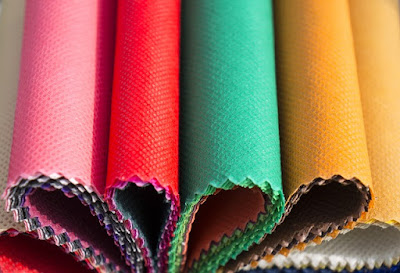There are three types of methods alternately used for joining materials they are fusing, Welding adhesives and moulding. In this article we will learn about two of them.
FUSING
What
is fusing?
During
fusing an interlining is bounded to the outer fabric with the help of a
thermoplastic resin. A fusible interlining contains a base cloth which can be
similar to that of a sewn-in interlining. The fusible interlining consists of a
thermoplastic adhesive on the top of the surface generally in the form of drops
which appear smaller in size which will melt eventually in the further process
on the application of specific temperature. Not all garments fabrics are fused.
How
is fusing advantageous?
It
offers reduction in direct labor and skills giving consistent quality.
Factors
required during fusing:
- The base fabric of interlining: The base fabric is available either in woven or non-woven or even in knitted form (Warp knit). Nylon fibers offer soft handle and drape.
- The pattern of application of the resin to the cloth: Resins used are made up of PVA, PVC, and Polyamides, polypropylene, polyester, polypropylene and polyethylene.
- The type of fusible resin: The choice of the resin depends upon the outer fabric used. The resin must be harmless and should have low dye penetration.
The
means of fusing:
The
fusing equipments should provide control over three main factors they are
namely, temperature, pressure and time.
- Temperature: If the temperature is low than the desired temperature then it offer poor and subsequent adhesion. Higher temperature gives too much flow resulting of performance.
- Pressure: Too low pressure reduces penetration with consequent low adhesion where as high pressure provides excessive penetration of resin.
- Time: Enough time must be given to the equipment to allow the temperature and induce melting of resin and penetration of the outer fabric in order to produce a satisfactory bond.
Fusing equipments and methods:
- Specialized fusing presses
-Flat
bed fusing press
-continuous
fusing press
-High
frequency fusing
- Hand irons
- Steam presses
The
fusing methods are reverse fusing, sandwich fusing and double fusing.
Difficulties
of fusing are that it can easily pull apart, there is a problem of raw edges in
lapped seam, less recovery, stretch and if it is not correctly joined then it
is impossible to alter.
WELDING
AND ADHESIVES






0 Comments